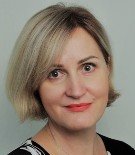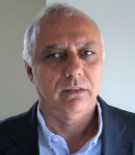Conference Agenda
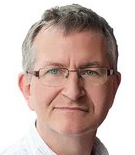
Arcensus Diagnostics, Germany

Shaare Zedek Medical Center, Israel
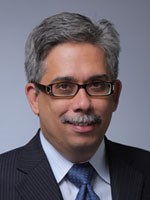
University College Dublin, Ireland
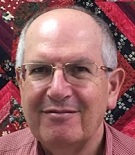
The Gaucher Unit, Shaare Zedek Medical Center, Jerusalem, Israel
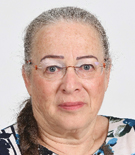
Tel Aviv University, Israel
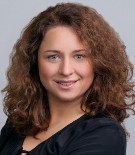
Volha Skrahina 1,4, Hanaa Gaber 1, Eva-Juliane Vollstedt 2, Toni M Förster 1, Tatiana Usnich 2, Filipa Curado 1, Norbert Brüggemann 2, Jefri Paul 1, Xenia Bogdanovic 1, Selen Zülbahar 1, Maria Olmedillas 1, Snezana Skobalj 1, Najim Ameziane 1, Peter Bauer 1, Ilona Csoti 3, Natalia Koleva-Alazeh 3, Ulrike Grittner 1, Ana Westenberger 1, Meike Kasten 2, Christian Beetz 1, Christine Klein 2, Arndt Rolfs 1, ROPAD Study Group
- 1CENTOGENE GmbH, Rostock, Germany.
- 2Institute of Neurogenetics, University of Lübeck, Lübeck, Germany.
- 3Parkinson-Center, Gertrudisklinik Biskirchen, Leun, Germany.
- 4Arcensus, Rostock, Germany
Background: Genetic stratification of Parkinson’s disease (PD) patients facilitates gene-tailored research studies and clinical trials. The objective of this study was to describe the design of and the initial data from the Rostock International Parkinson’s Disease (ROPAD) study, an epidemiological observational study aiming to genetically characterize ~10,000 participants.
Methods: Recruitment criteria included (1) clinical diagnosis of PD, (2) relative of participant with a reportable LRRK2 variant, or (3) North African Berber or Ashkenazi Jew. DNA analysis involved up to 3 successive steps: (1) variant (LRRK2) and gene (GBA) screening, (2) panel sequencing of 68 PD-linked genes, and (3) genome sequencing.
Results: Initial data based on the first 1360 participants indicated that the ROPAD enrollment strategy revealed a genetic diagnostic yield of ~14% among a PD cohort from tertiary referral centers.
Conclusions: The ROPAD screening protocol is feasible for high-throughput genetic characterization of PD participants and subsequent prioritization for gene-focused research efforts and clinical trials. © 2020 The Authors. Movement Disorders published by Wiley Periodicals LLC on behalf of International Parkinson and Movement Disorder Society.
Keywords: GBA; LRRK2; Parkinson’s disease; genetic factors; observational clinical study
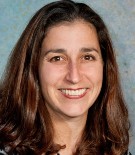
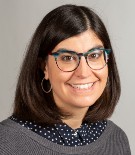
UCL Queen Square Institute of Neurology, UK
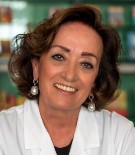
There are many disorders that involve the bones, the most common being osteoporosis.
We are going to describe other diseases that are for less common.
These disorders are about 500, whose over 100 are metabolic nature.
These disorders are taking off as new dedicated drugs are becoming available.
In this speach recent progresses in the field will be presented and discussed.
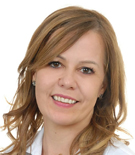
Federal University of Rio Grande do Sul, Brazil
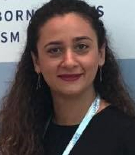
Tbilisi State Medical University, Georgia
Rare diseases (RD) are an emerging group of diseases that pose special challenges to affected patients and their families, treating physicians, researchers, insurance companies and the government. Georgia is a small country with a population of 3.7 million people and awareness of rare diseases is still low among health professionals. Our aim was to raise awareness of RD in the country and enable diagnosis of RD patients. In 2018-2020, we were part of the biomarker clinical trial with Centogene, a Germany based biotech company (www.centogene.com) . Before enrolment in the trial, patients were offered a free genetic test. We also collaborated with Face2Gene to conduct several workshops on the application of artificial intelligence in the diagnosis of rare diseases for doctors and medical students. We initiated the “Rare diseases” section in one of the largest Georgian medical social media groups “MedCity”, where information about a specific rare disease is uploaded in Georgian language every week. We also collaborate with Unique (rarechromo.org) and provide translations of rare disease guides in Georgian language. As a result, over 3000 individuals were genetically tested over a 4-year period. Interestingly, WES had a diagnostic yield of up to 60% in a cohort of clinically well characterized patients with neurodevelopmental disorders, the majority of which were caused by novel de novo mutations. Based on these activities, awareness of RD among health professionals has increased significantly. Our goal for the future is to promote the education of doctors and students to recognize RD, support the formation of patient advocacy groups, negotiate with the government to support RD patients, and facilitate the improvement and expansion of the national NBS programme.
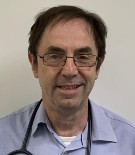

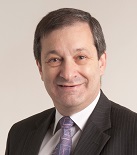
The Royal Melbourne Hospital, Australia
PNH results from an acquired mutation of the PIG-A gene resulting in sensitivity of red cells to undergo intravascular haemolysis with a number of life-threatening downstream effects such as anaemia, transfusion requirement and most importantly, thromboembolic phenomena. The introduction of anti-complement factor 5 (C5) therapy into clinical practice cover a decade ago, transformed the outlook of this disease with benefit to nearly all symptomatic patients. The success of the original monoclonal antibody therapy, eculizumab, development of a longer acting form, ravulizumab has made treatment more reliable. And convenient for patients. During this decade new issues with suboptimal responses in some patients have been identified, particularly the issue of extravascular haemolysis. This has led to the development and eventual marketing of a more proximal inhibitor of complement at C3 which has shown effectiveness in this setting. A cornucopia of agents, both proximal and terminal are under development with a variety of routes of administration including oral, subcutaneous and intravenous. This may eventually result in a very unusual situation in an ultra-rare disease, of a huge array of treatment choices. With multiple treatments comes the need to develop an outcome registry beyond the single company-sponsored registry that has been in existence for 15 years. The International PNH Interest Group (IPIG) is close to finalising an academic registry with industry stakeholders participating and having the ability to develop product-specific silos of commercially sensitive data. This could be a model for sustainable registries in other rare diseases.

University Medical Center Hamburg-Eppendorf, Germany
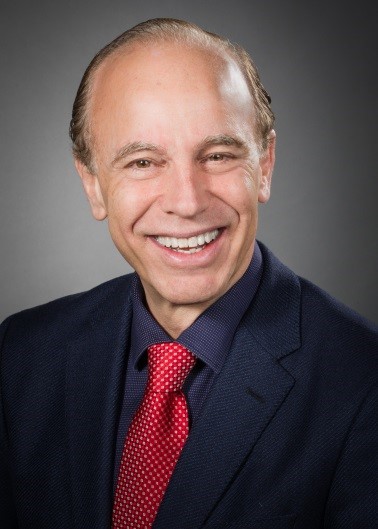
While the utilization of gene editing technologies is spreading like wildfire, this purpose of this talk is to take a hard look at the ethical aspects of modifying the human genome. While somatic gene therapy affects the individual patient only, genetic alteration of germline cells: sperm, oocytes and embryos, will be passed on to the offspring. With increasing easy access to emerging technologies, notoriously CRISPR, there is growing concern that, in the absence of clear guidelines and professional (non-governmental for now) regulation, there is a concrete risk of abuse, overuse and misuse. Examples of ethically challenged somatic and germline gene editing are discussed, along with cases of successful, careful, somatic gene therapy. As is frequently the case, the moral discussion lags behind the rapid development and spread of the technology. The gap between “gene therapy” and “gene editing” may be widening, presenting some tough questions: What genes should be edited? Who should make these decisions? Can society form an effective firewall against abuse without governmental intervention? How do we avoid the potential slippery slope of CRISPR becoming a powerful eugenic tool? Can we envision how routine genome editing will change our world? Children – manufactured products? Would access to gene editing be limited to the privileged?
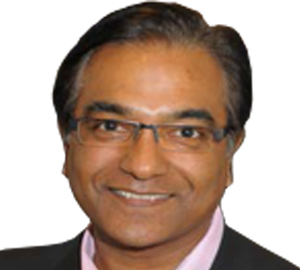
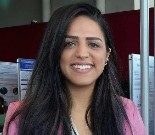
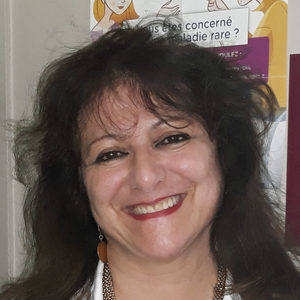
Referral Center for Lysosomal Diseases Assistance Publique-Hôpitaux de Paris, France
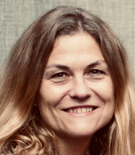
International Gaucher Alliance (IGA), UK
Background: Type 2 and Type 3 Gaucher Disease (GD), a rare inherited metabolic disorder, are neuronopathic GD (nGD) and result in infant death or progressive neurological deterioration. Current drug therapies do not cross the blood brain barrier and thus do not treat nGD.
Objectives: To develop a patient registry specific to nGD through collaboration between patients, caregivers, clinical experts, researchers, and industry.
Methodology: Led by the International Gaucher Alliance (IGA), multiple stakeholders, including patients, caregivers, clinicians, and researchers, partnered to develop a web-based platform for patients with nGD and their caregivers. Questionnaires (baseline and follow-up) were designed to capture data relevant to patients, including neuronopathic Gaucher-specific Patient Reported Outcomes (nGD-PRO) and Observer Reported Outcomes (nGD-ObsRO). Qualitative interviews with patients and caregivers ensured the use of relevant terminology. Clinicians informed the process of diagnosis confirmation.
Results: The Gaucher Registry for Development Innovation and Analysis of Neuronopathic Disease (GARDIAN) is a global, longitudinal, prospective patient registry with no age restrictions. GARDIAN will capture data at baseline and every 6 months for 3 years. Data collected will include enzyme/genetic results, patient characteristics, symptoms (neurological/non-neurological), medical history, treatment, and comorbidities. Patient- and caregiver-reported outcomes include the PedsQL, PGI-S, GAD-7, PHQ-9 and an nGD-PRO and nGD-ObsRO to be validated within the registry.
Conclusion: The contribution of multiple stakeholder perspectives in the development of GARDIAN optimizes its value as a real-world data source. The collection of data in a systematic and standardized manner will provide a research platform for improving disease understanding, supporting patients with nGD, advancing disease management, designing safer treatments, and improving patient outcomes.
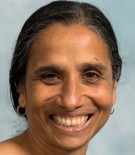
University of Cambridge and MRC Laboratory of Molecular Biology, UK
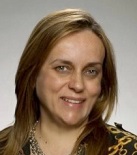
Lysosomal and Rare Disorders Research and Treatment Center – LDRTC, USA

Magnetic resonance imaging (MRI) is the gold standard to evaluate bone marrow; digital and machine-learning technologies can improve scan performance. In our group we have applied a structured bone marrow MRI reporting model in a cohort of 131 Spanish GD patients at diagnosis and follow-up and to use machine-learning techniques in order to predict the evolution of bone disease. 446 MRI exams performed between April 1995-August 2022 were re-evaluated. A blinded expert radiologist reviewed all exams and applied the designed report template. The studies were divided into those carried out at: A: baseline; B: between 1 and 4 y; C: between 5 and 9 y; D: after the 10th year of follow-up. Clinical data including: demographic, genotype, biomarkers, therapy and cumulative years of exposure. At the time of the first study the mean age was 24.7 (1–80) y, and the median S-MRI (Spanish MRI score) was 8.40 (males: 9.10 vs. females: 7.71) (p<0.001). At baseline the S-MRI was 13.16 in splenectomized patients vs. 6.96 in non-splenectomized patients (p<0.001). Three random Forest model were applied in order to predict bone complications. The most important features identified were: S-MRI score, age of first treatment and treatment for model A; S-MRI score, age of first treatment and spine infiltration for model-B and the femur infiltration, age of first treatment and age at diagnosis for model-C. Men showed a higher infiltration level and women faster response to therapy. The random forest model identified BM infiltration at femur level and homozygous infiltration pattern at any level as predictors for bone complication.
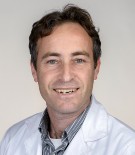
Sarcomas are rare and heterogeneous malignancies that comprise less than 1% of all cancers. We present three cases with common clinical presentation and delayed diagnosis of extremely rare tumors and bone dysplasia. A 70-years-old female presented with retro-sacrococcygeal mass and elevated inflammatory markers diagnosed with Angiomatoid fibrous histiocytoma. A 33-years-old male presented with back pain and osteomalacia diagnosed with tumor-induced osteomalacia and 46-years-old female with a debilitating long-standing shin pain diagnosed with Ribbing disease. Cases are presented from molecular level to its clinical significance.
Conclusion: Rare diseases should be considered in the differential diagnosis of common symptoms.

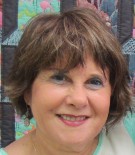
 Pre-Recorded)
Pre-Recorded) 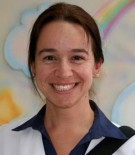
Centro Médico Docente la Trinidad, Venezuela
